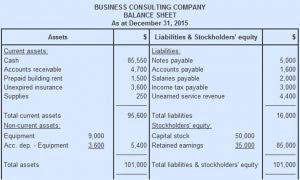
The amount of money requested for a retainer fee is generally based on an attorney’s hourly rate times the expected amount of time it will take to complete their work on a matter. Although both involve paying money upfront, they serve different purposes and follow different legal frameworks. A security deposit is intended to cover potential property damage or unpaid rent and is governed by landlord-tenant or contract law. A legal retainer secures future legal services and is regulated by professional conduct rules. Security deposits are generally refundable unless there is damage or a breach, while retainer refundability depends on the type of retainer and whether services were rendered.
Best Practices For Law Firm Retainer Fees
By following these guidelines, you’ll be well-equipped to determine a fair and reasonable retainer fee for your project or engagement. Remember that transparency and clear communication between both parties are essential for a successful business relationship. If you accept upfront deposits or retainers for products or services, there are several steps you need to take to account for that money. In this article, we walk you through those steps — from setting up a liability account to managing a canceled job. When listing the services included in the retainer fee, make sure to be straightforward and brief. Give a clear description of each service and mention any specific deliverables, milestones, or deadlines.
Guaranteed Income – Advantages of a Retainer Fee
Regardless of the language used, advance fees must be deposited into a trust account, and unearned fees must be refunded to the client upon termination of the representation. The reasonableness requirement also applies to all fee arrangements, irrespective of the terminology employed. Properly managing client funds and fees is a critical responsibility for lawyers and legal administrators. The ethical and professional obligations related to handling client money are paramount to maintaining the trust and integrity of the legal profession.
- A retainer fee is a prepaid amount paid to professionals, such as consultants, freelancers, and lawyers, that serves as a down payment on future services.
- This requires unearned legal retainer fees to be deposited into trust accounts, keeping them off the firm’s hands until they’re earned through the agreed-upon legal work.
- Fixed retainer payments allow clients to plan finances accurately without unexpected expenses.
- Retainer fees have likely been around for hundreds of years since service providers have always tried to get paid in advance for their work.
- The only winner in this situation is the law firm, not the client who was the victim of the accident.My personal approach is that I don’t make more than the client.
- Maintaining open communication with clients regarding retainers strengthens relationships.
- There may thus be misunderstandings regarding the nature and operation of a lawyer retainer.
What is a Typical Retainer Fee For a Lawyer?
When it comes to billing clients, it is crucial to understand the differences between retainer invoices and standard invoices to ensure a smooth and successful business transaction. Regularly updating the books to reflect the status of retainer allocations is essential for compliance with accounting standards. An accountant should closely monitor these allocations, ensuring funds transfer to revenue only when corresponding services are performed. This writer could offer a six-month retainer contract with a 10% discount for the same twelve blog posts.
98–525, § 643(d)(1), substituted “, the disposable http://www.gestion-paye.groupe-fimac.fr/charging-clients-a-retainer-how-various-charging/ retired or retainer pay of the member” for “from the disposable retired or retainer pay of a member, such pay” before “shall be used to satisfy”. 101–510, § 555(f)(2), substituted “retired pay” for “retired or retainer pay” wherever appearing. 101–510, § 555(f)(2), substituted “retired pay” for “retired or retainer pay” wherever appearing in introductory provisions and in subpar. 101–510, § 555(f)(2), substituted “retired pay” for “retired or retainer pay” in section catchline. In the second option, an evergreen retainer clause outlines when a client must replenish funds and by how much. Access hundreds of verified offers in one trusted place—curated by our Veterans Discount Team.

Priority Access
Setting a Accounting Periods and Methods clear scope of work when you’re managing retainer projects is essential. You can also integrate your payment and billing methods with a PSA platform like Rocketlane. Make sure to indicate when the retainer contract will end and specify how many days’ notice is required for either party to terminate the retainer agreement. But it could result in a higher bill for the client at the end of the month, especially if there are additional costs for extra hours. With this understanding, they can propose more innovative solutions tailored to their client’s needs, providing more value in the long run.

How to Draft a Compelling Retainer Agreement
If you’ve reached one of these points, you need a strategy to get out of your contract. Of course, the simplest way is to include this in the agreement you send to a potential client. A simple break clause allowing you to give 30 days’ notice or a longer period is sufficient. Focusing too much on your current work may keep you from finding more lucrative work, a more strategic client, or more time for a holiday. If you get locked into an agreement that consumes all your resources, then you may not have the space or capacity to take the next step in building your business. So, let’s cover some ways you can create agreements that are genuinely helpful to both you and your retainer clients.
How Do Retainer Fees Work?

Sometimes, a retainer can create a false sense of unlimited service, leading to misunderstandings if certain services aren’t covered. Additionally, some clients might feel compelled to use a service simply because they’ve paid a retainer, even if it’s not in their best interest. Such agreements are common among businesses such as tech companies, restaurants, and hospitals that may be threatened with a legal suit by one of their customers.
Improved client experience

The interest usually goes into a state charitable fund to pay for legal services for those who cannot afford them. A lump sum retainer requires the client to pay an upfront fee for a specific number of hours of work. It’s a straightforward payment model that simplifies the invoicing process, making it easier for both parties to manage financial expectations. Under the retainer model, the client agrees to pay a retainer payment recurring fee (called the retainer fee) for professional services during a specified period (the retainer period). Payments can be made either upfront (as an advance retainer fee) or upon completion of the service.
Benefits of using retainer agreements
- Automated billing tools like Stripe, PayPal, or direct bank transfers streamline payment processes.
- Our contract templates are written to help you set clear expectations with your clients and run your most profitable business.
- 98–525, § 643(d)(1), substituted “, the disposable retired or retainer pay of the member” for “from the disposable retired or retainer pay of a member, such pay” before “shall be used to satisfy”.
- An example of a successful retainer-based relationship in WordPress development is an e-commerce business that retains a WP agency to manage its online store.
Can a lawyer or financial advisor charge both a retainer fee and hourly rate? Yes, some professionals may choose to charge both a retainer fee and an hourly rate. This hybrid payment structure can provide clients with cost predictability while also ensuring that they pay for the actual time spent working on their case or investment portfolio.